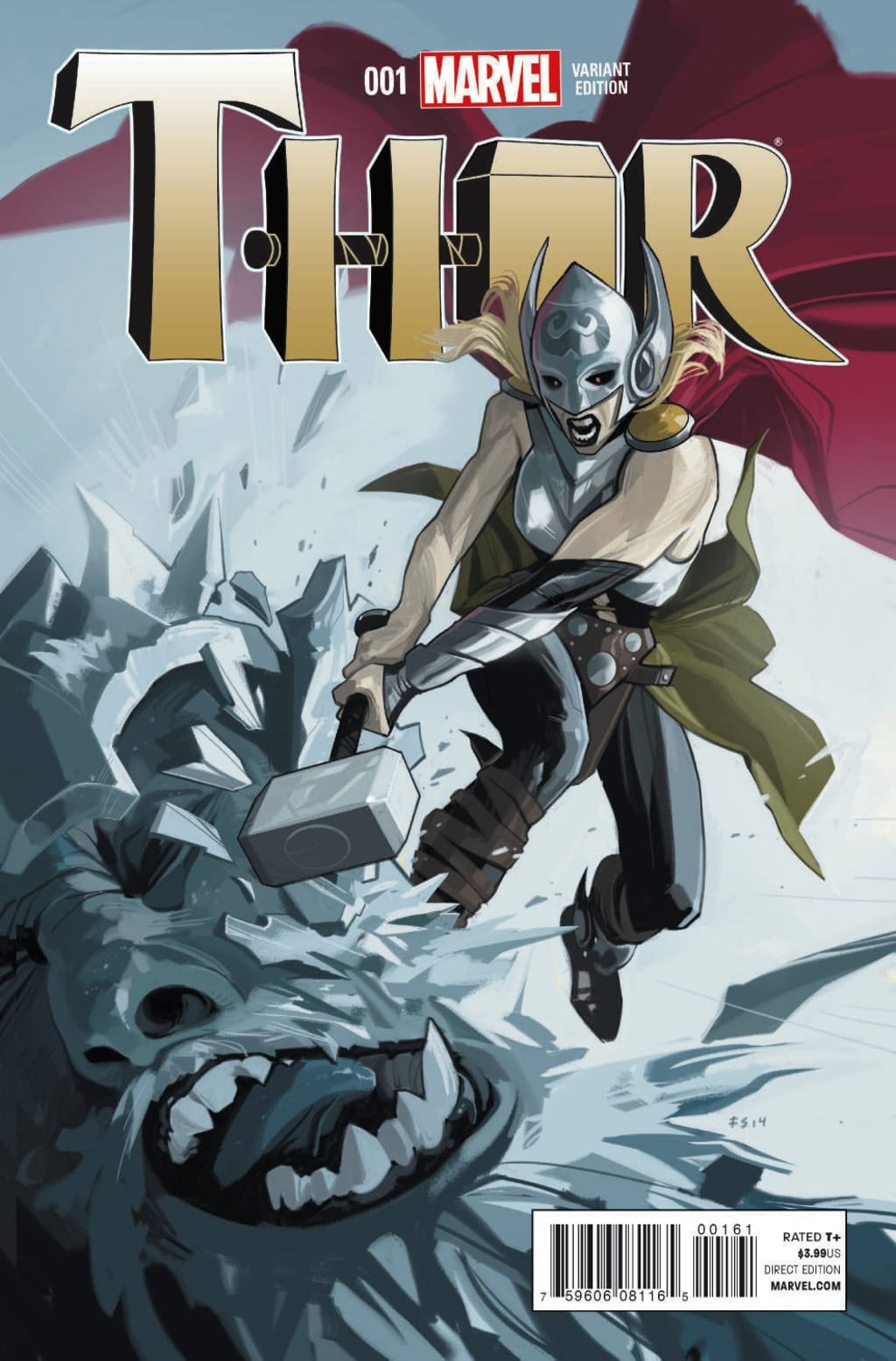
1. New Thor
A challenge with Thor as a character is, he's the actual god of Norse mythology, and Norse mythology has a stated end for the stories of their gods: Ragnarok. Thor is also the son of Odin, king of the Norse gods. And at some point he's supposed to marry the goddess Sif. In the 60 years that Thor has been a Marvel Comics character, Ragnarok has happened twice, he has taken Odin's place as rightful ruler of Asgard, and his relationship with Sif has been on hiatus for a long time. He has also had several changes in his human identity, ranging from Don Blake to none. What wasn't done was this, which is the basis of the next Thor film: making Thor a secondary character named Odinson and granting the name and identity of Thor to someone else, who for a while, is a mystery. Why did Thor lose his birthright? Who is the new Thor? How long will this last? All of these were questions that needed to be answered, and they were, in what was overall a good story.
2. Flashpoint
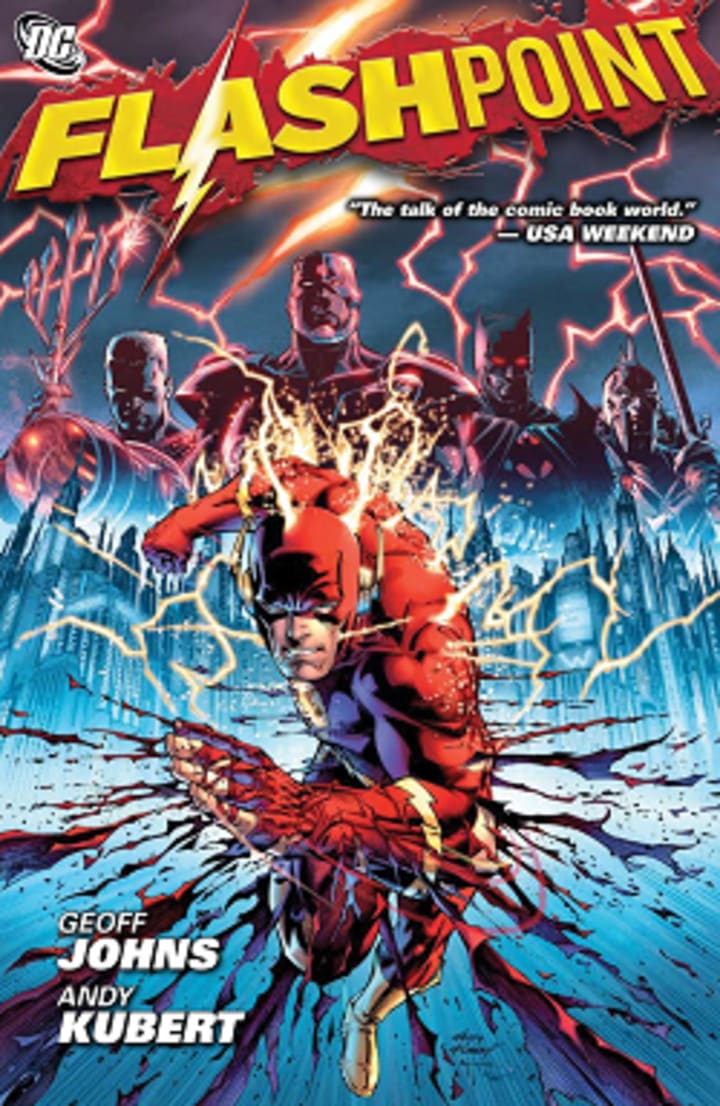
In the legendary mini-series "Crisis on Infinite Earths," which rebooted the DC Universe for the first time in the mid-1980s (see 1980s article linked below), a key issue features Silver Age Flash Barry Allen racing to save the Earth from a lethal beam. He runs faster than he has ever ran before, well beyond the speed of light, intercepting the beam but seemingly dying in the process. It is perhaps the single most iconic scene in the series.
With "Flashpoint" Barry Allen gets center stage again in another series that changed all of DC. The plot is familiar, one used in stories such as Marvel's "Age of Apocalypse" - The Flash is the only person alive who seems to know that something is wrong with the world as we know it. Thomas Wayne is Batman and his son Bruce Wayne is dead. There is no Superman. Cyborg is the world's greatest hero. Wonder Woman and Aquaman are at war...with each other. Flash investigates how this all started, and decides he has to make things right.
This mini-series, which spun off multiple related mini-series and crossed over with effectively all the DC titles, was later adapted into an animated film, a storyline on the CW series "The Flash" and is the partial basis for the upcoming Flash film.
3. Hawkeye solo series (Hawkeye vol. 4)
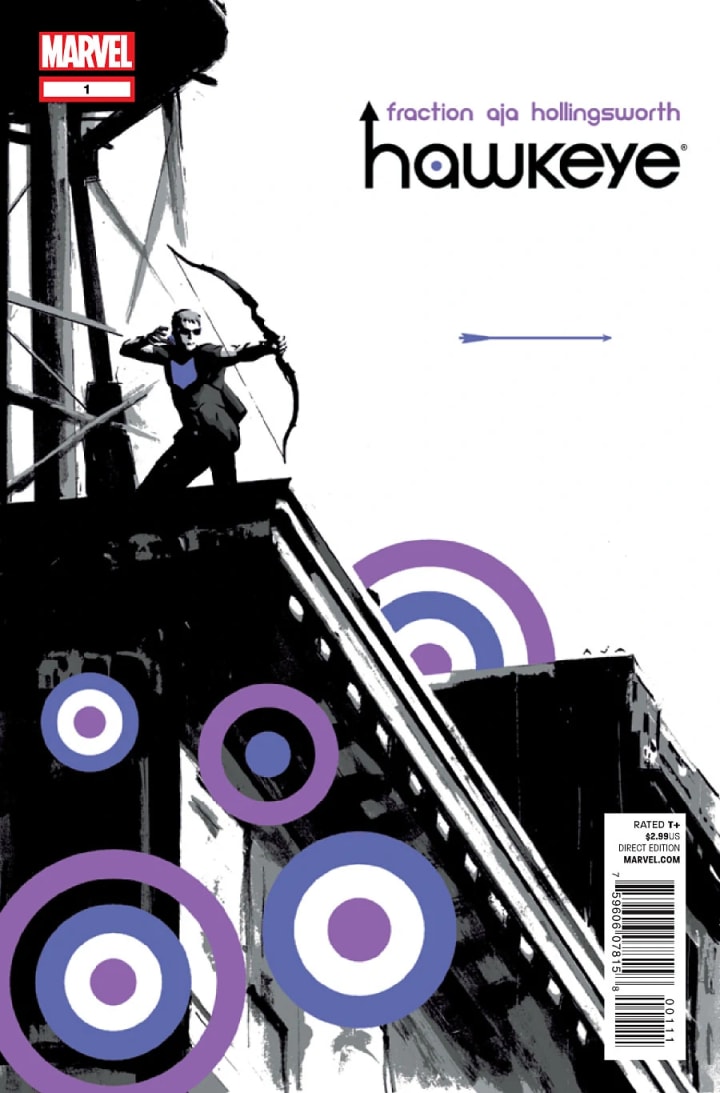
If you liked the "Hawkeye" series on Disney +, you'll love this. In fact you'll probably love it more. Hawkeye as a character has been around for roughly 60 years. He started as a minor Iron Man villain, partnered with the Black Widow. He became an Avenger. He co-founded and led the West Coast Avengers. He briefly joined the Defenders. He led the Thunderbolts. He's had good costumes and bad costumes. He's been married. He's slept with many of his team-mates. He's been killed and resurrected. For the purpose of this series almost none of that matters, other than being an Avenger and the world's greatest archer.
Written by Matt Fraction, one of the strongest writers in modern comics, this series shows Hawkeye when he's not being an Avenger, though Avengers such as Iron Man show up from time to time. Unlike many of his team-mates, Hawkeye doesn't live the glamorous life of a playboy or super-spy. He rents an apartment in a not-great neighborhood where he gets involved in the lives of his low-income neighbors. He stands in the way of the local organized crime. And he continues to act as mentor the "other" Hawkeye, Young Avenger Kate Bishop, who may or may not be a better archer.
Great plots, even better dialogue, the series is what good comics are all about.
4. Miles Morales Spider-Man (Ultimate Fallout #4, Spider-Men)

In 2000, Marvel launched the Ultimate Universe in an attempt to attract newer fans. The appeal of the Ultimate universe was having all of Marvel's key characters without having to worry about 40 years of backstory. Many of the same stories took place, such as Spider-Man's Clone Saga, while avoiding mistakes that may have been made the first time around.
Spider-Man was a key player in the Ultimate Universe, which made the impact of his death in 2011 devastating. You may remember the news story, "Marvel Kills Spider-Man." It wasn't the mainstream Spider-Man, it was Ultimate Spider-Man. But they did kill him, and his legacy inspired Miles Morales, another young man who had recently acquired spider-powers, to become the new Spider-Man. Morales went on to be the new star of "Ultimate Spider-Man," and would quickly co-star with the Spider-Man of the mainstream Marvel Universe in the mini-series "Spider-Men." He also was in the recent "Into the Spider-Verse" animated film.
5. New Ms. Marvel
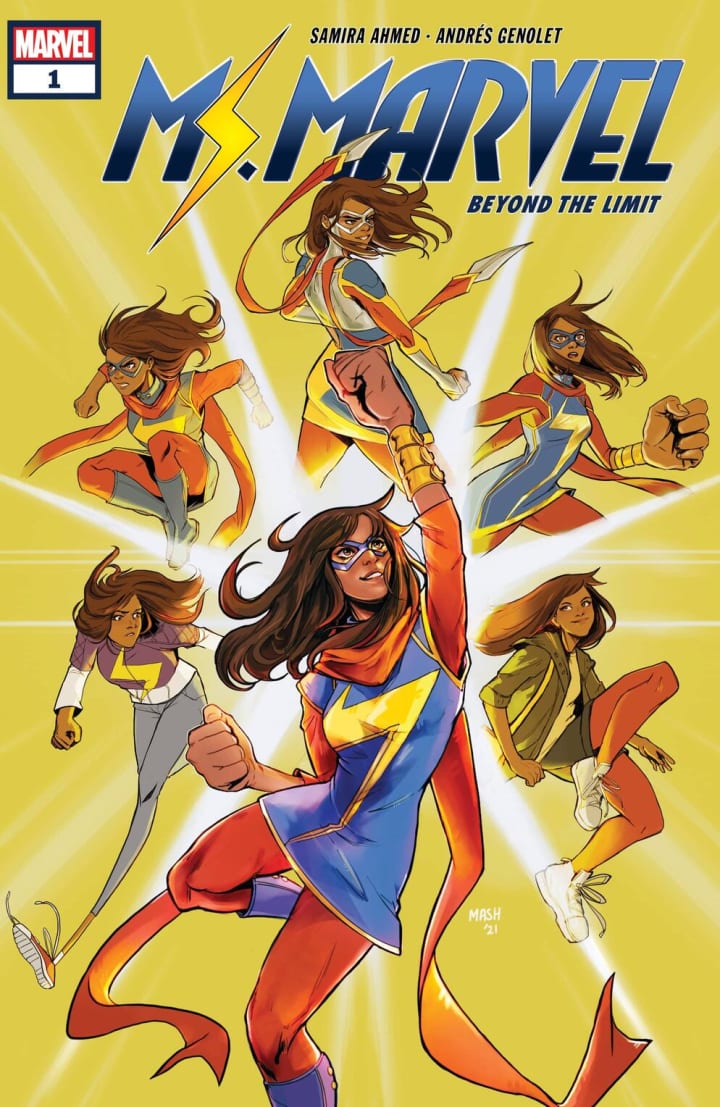
The original Ms. Marvel, Carol Danvers was created to the first feminist super-hero. A retired Air Force officer, Danvers went on to work for "Ms." magazine, and while she was inspired by the career of her friend, Kree warrior Captain Mar-Vell, she was a heroine in her own right.
New Ms. Marvel Kamala Khan acquired her body-morphing powers as a result of being exposed to the Inhuman's Terrigen Mists. Deployed worldwide, the sacred mists released superhuman abilities in people who didn't know they had latent Inhuman genes. While her powers were Inhuman in nature, Kamala decided to be an independent heroine, taking the original name used by Danvers as the new Ms. Marvel. Khan has since gone on to join the Avengers and a new version of the Champions.
6. Dying Wish (Amazing Spider-Man 698-700)
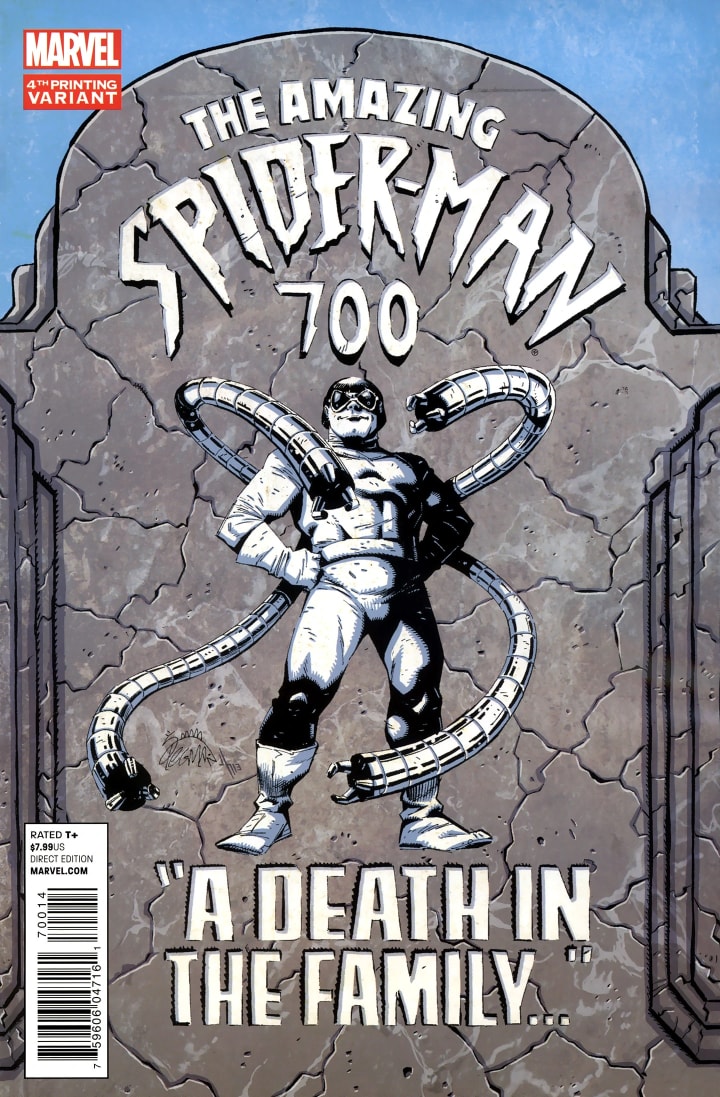
Similar to the situation with Thor mentioned above, in his 60-year history Spider-Man has been through essentially everything. Multiple family members have died and been resurrected, he's been married, and we've seen multiple future and alternate versions of him. He also has joined effectively every team in the Marvel Universe including, somehow, the X-Men. What hadn't been done was actually killing him. Ultimate Spider-Man died, but Marvel Spider-Man (Earth 616) did not. Until this storyline, which was brilliant.
One of the benchmarks of good storylines, the really good ones, like "Kraven's Last Hunt" (see link to 1980s article below) is taking an overused character who has grown a bit stale and putting new life into them. In this case that character was Doctor Octopus, one of Spider-Man's oldest foes. Octopus had sometimes been portrayed as a physical match for Spider-Man, and he often led the deadly team known as the Sinister Six. But other times he was portrayed as a pudgy relic who could be defeated with some webbing on his glasses and a punch to the jaw. What was certain was that Octopus never really won. No matter who he was teamed up with or what his scheme was, he never won in the end.
In this story, Octopus, who has been long established as the world's leading expert on radiation, is dying of cancer, likely caused by the radiation he worked with. His is immobile and dying, served by the arms he has used as tools for years. In his dying moments he activates a plan to switch minds with his old nemesis Spider-Man, taking over Spider-Man's young, super-powered body and leaving his foe to die of cancer. This time, the villain's plan succeeds, and Peter Parker dies, the series ends, and Otto Octavius is reborn as The Superior Spider-Man!
7. Carol Danvers becomes Captain Marvel (2012 series)
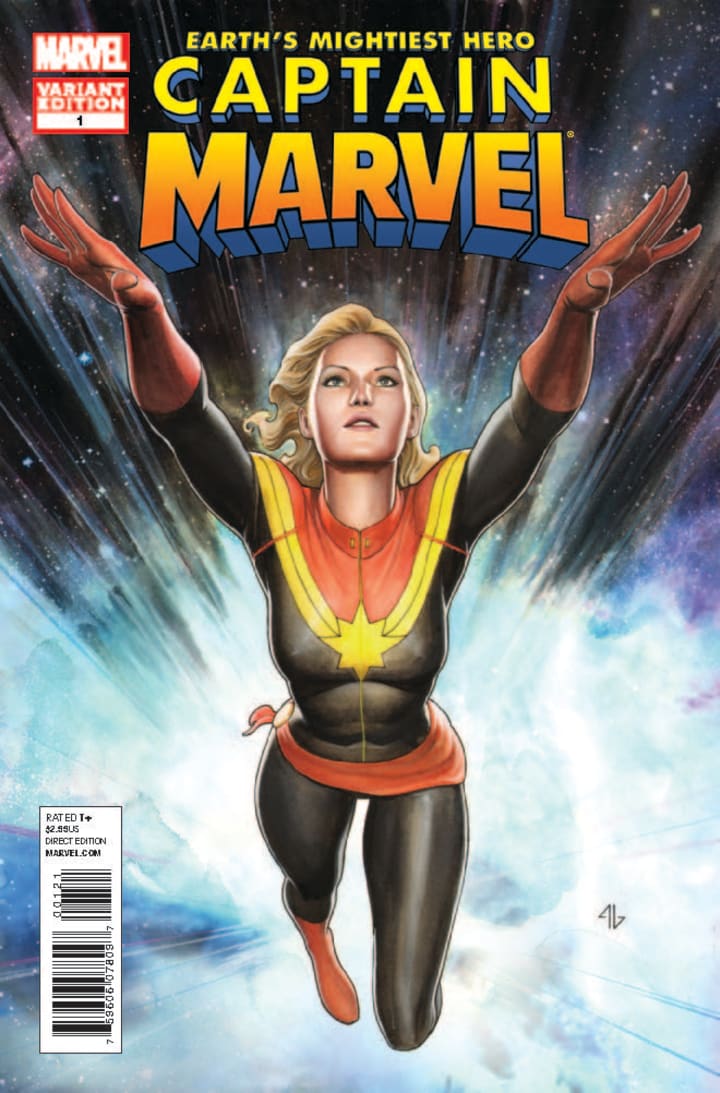
Since the 70s when she was initially an unpowered supporting character in "Captain Marvel," Carol Danvers gained powers and the identity of Ms. Marvel, becoming an Avenger. When the original Captain Marvel died, she retained her Ms. Marvel identity, with several other heroes taking on the name of Captain Marvel. Then her powers were stolen by the then-evil mutant Rogue and Danvers went through several other identities, from Binary to Warbird. In this series, she finally took on the name and legacy of Captain Marvel. The series, written by Kelly Sue Deconnick, also takes Carol Danvers to a new, better level as a character, incorporating her career as an Air Force pilot as much as her career as an Avenger.
8. Secret Wars
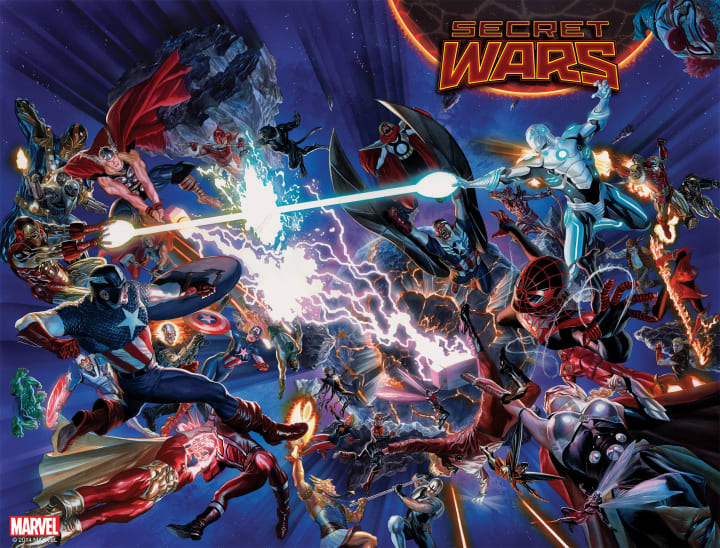
While the timeline of the DC Universe has been rebooted several times, the Marvel Universe never had been, until 2015. In a story similar to "Crisis on Infinite Earths," the Illuminati had discovered some time earlier that the multiverse was collapsing in a series of "incursions" as one reality would collide with another. No actions seemed to be able to slow or stop the process, including the use of the Infinity Gauntlet. As this series begins, Marvel's core reality is about to be wiped out, and then it is. But there are survivors, including Doctor Doom, who naturally finds a way to turn the situation to his advantage and make himself the supreme ruler of the universe.
The series marks the effective end of the original Marvel Universe, as well as the New Universe, which had a number of titles in the 1980s, and the more recent Ultimate Universe, featuring alternate versions of the Avengers as well as Ultimate Spider-Man Miles Morales. After the series, some but not all of the characters were brought into the new Marvel Universe.
9. Spider-Verse (Edge of the Spider-verse 1-5, Amazing Spider-Man vol. 3 7-15)
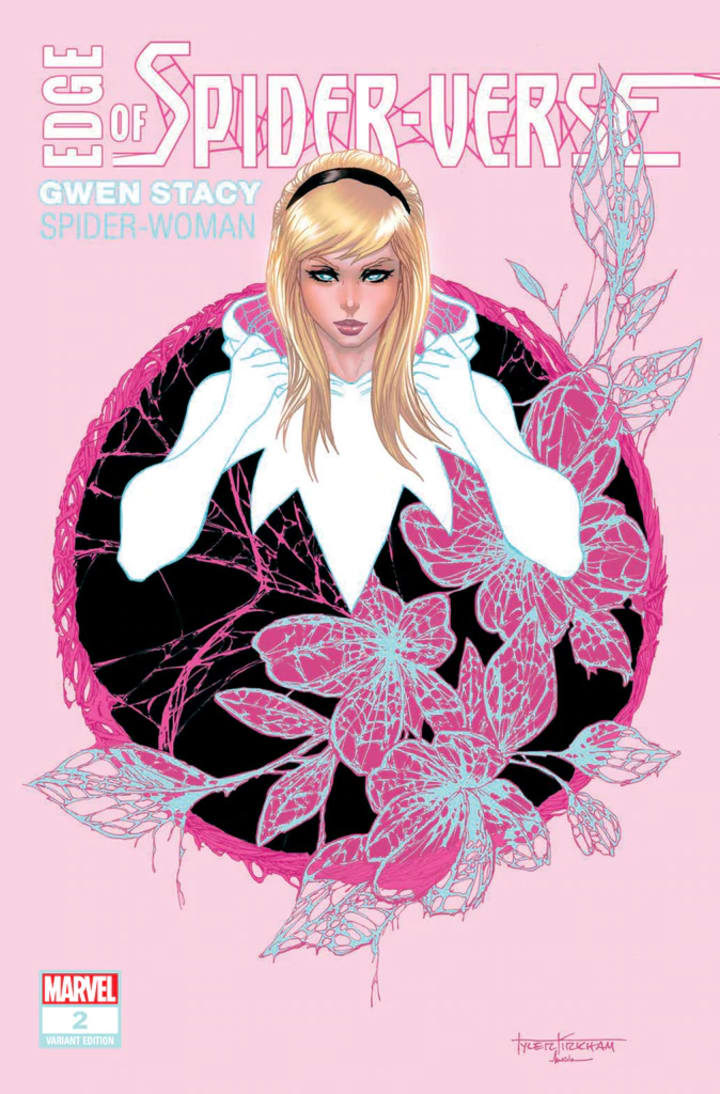
By now you've either seen or become aware of the animated film "Into the Spider-Verse." The idea of a Spider-Verse started here, in which a new villain Morlun, travels from one alternate reality to another with his family, the Inheritors, fighting and feeding off of the energy of each reality's spider-powered individuals.
This plot enables readers to see effectively every spider-related character in Marvel's history in one story, ranging from classic Spider-Man to Ultimate Spider-Man to Spider-Man 2099. Also included are Ben Reilly, the Scarlet Spider, fan-favorite Spider-Girl, every version of Spider-Woman, and Superior Spider-Man. Also introduced is the new hit character, Spider-Gwen, the Gwen Stacy of an alternate reality in which Gwen Stacy, not Peter Parker, was bitten by the radioactive spider.
10. Gwenpool
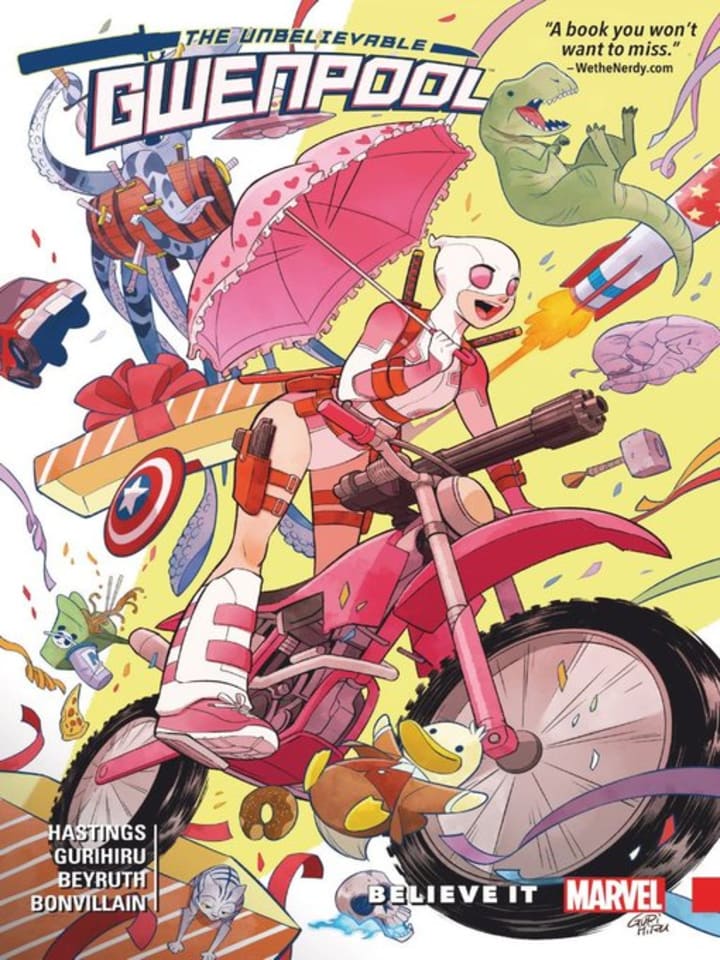
First appearing in "Deadpool's Secret Secret Wars" #2, Gwenpool was a spoof character based on the surprising popularity of Spider-Gwen. Gwenpool was also a hit, so she appeared in her own special and ongoing series.
The character is a clever turn on the concepts of Deadpool and Gwen Stacy. She's not Gwen Stacy, she's actually a girl named Gwen Poole who is pulled from our universe to the Marvel Universe. She has no super-powers, but she is aware that she's in a fictional universe, enabling her to "break the fourth wall" as Deadpool tends to do. Because she knows she's in a fictional universe, she acts like nothing matters, doing as she pleases, which involves lots of comic violence.
11. New 52
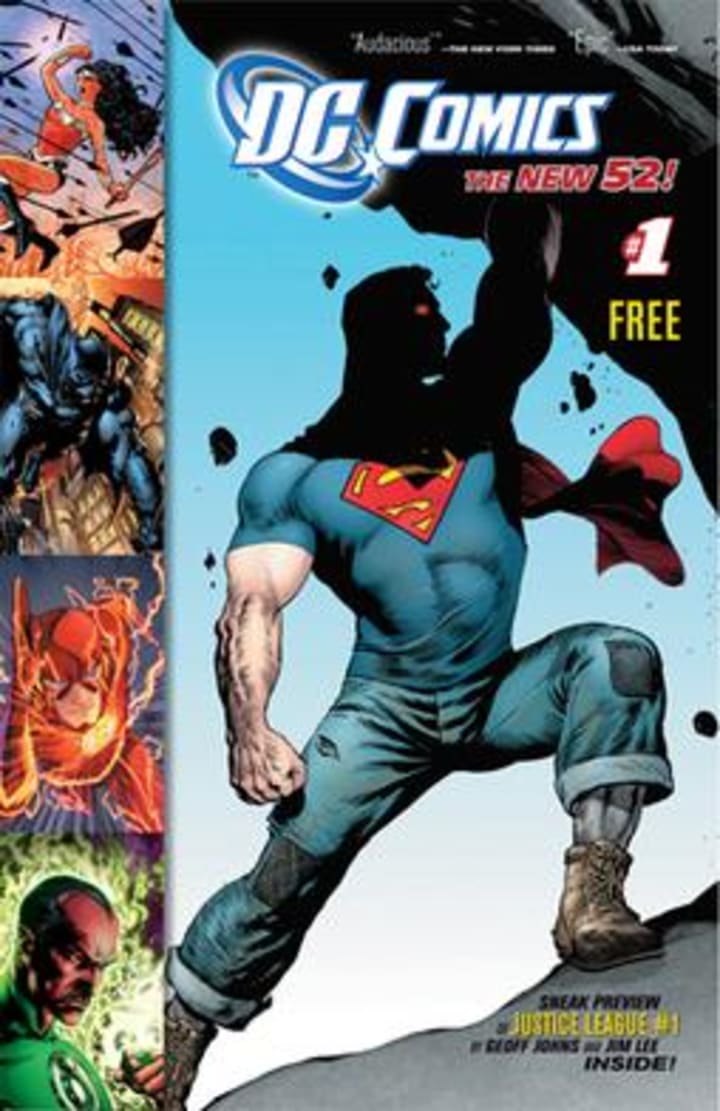
Following the events of "Flashpoint," the DCU was rebooted yet again. A previous reboot, "Countdown," established that there were 52 parallel worlds (it was implied that one of them was the world of the Marvel Universe. Similarly, it's been implied that the DC Universe is one of the many parallel realities in Marvel). Countdown reversed the action of "Crisis of Infinite Earths," in which all of DC's parallel realities and timelines were collapsed together. With "New 52" things were taken back to a more classic standard. For instance, the Justice Society, comprised of the original Golden Age versions of heroes such as Flash and Green Lantern, was on Earth-2. Meanwhile, the Justice League operated on Earth 1, and while many of the events we recall from classic stories, such as "Knightfall" still occurred, but in a tighter timeline of about 6-10 years. This established DCs main characters as younger than they had been portrayed for a while, while also providing different versions of characters than we had seen, such as Hawkman and Green Arrow. A side effect is that the Justice League had a fairly tight line-up for some time, enabling more character development between members.
12. Introduction to the Court of Owls (Batman vol. 2, 2-3)
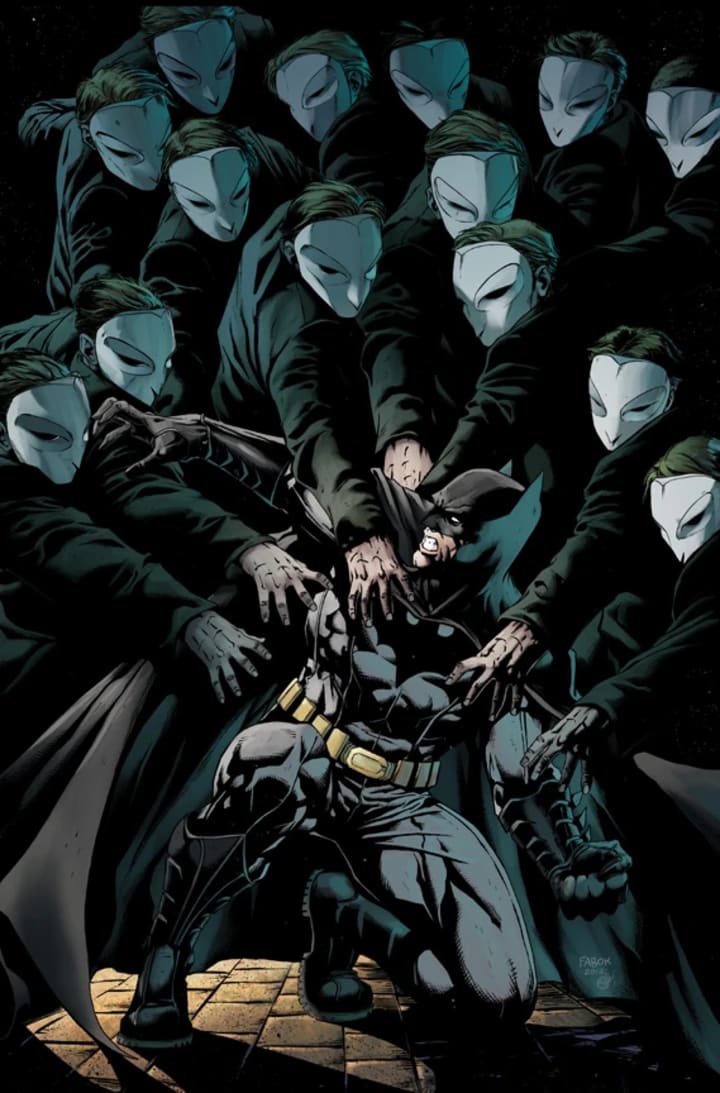
After the "New 52" reboot, writer Tom King took Batman to new levels of great storytelling and character development without sacrificing the past. All previous versions of Robin were still part of continuity, from Dick Grayson to Damian Wayne, and each had a different role to play. Early in the run, King also introduced readers to a new threat, the Court of Owls. a secret cabal of Gotham's elite, which has existed for centuries.
The Court operates all over Gotham, and literally under it, with secret passages and access tunnels leading up into both businesses and private homes. They can be anywhere or anyone, and they kill anyone who gets in their way.
13. Back in Black (Amazing Spider-Man 539-543)
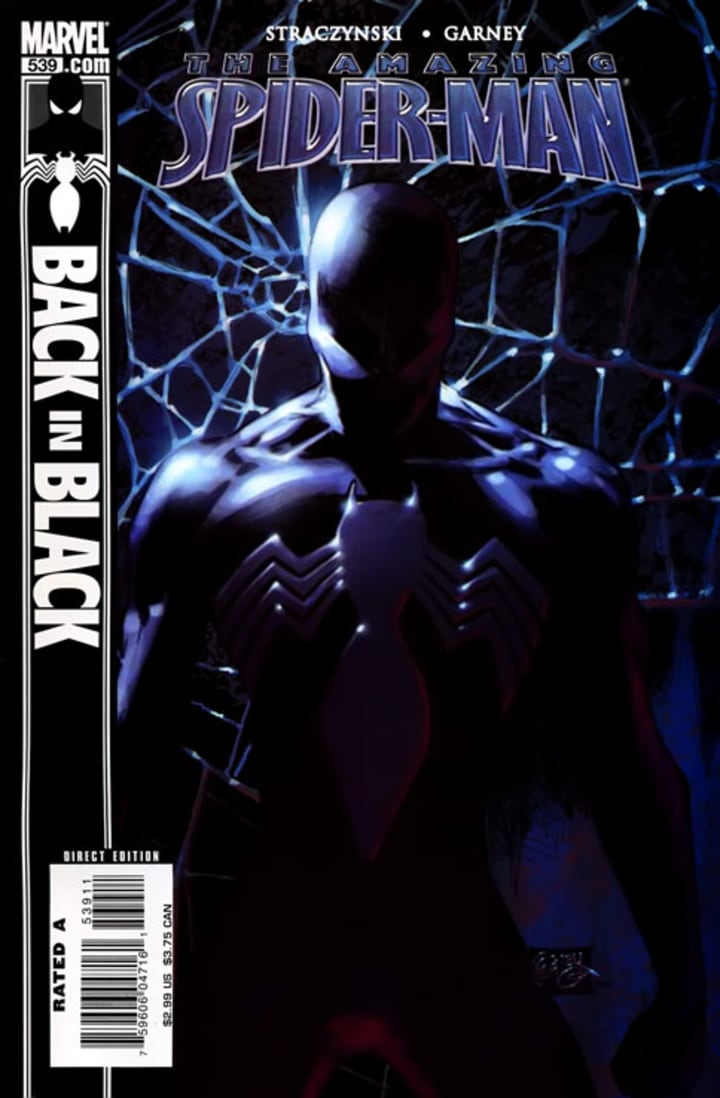
Okay, I screwed up. Both this storyline and "One More Day" were originally printed in 2007. I'm human and fallible. I've read a lot of comics. Lots and lots. Read the stories anyway, they're very good. This storyline in particular has one of my favorite scenes in any comic ever, in particular a Spider-Man comic.
Taking place immediately after "Civil War," in which Spider-Man demonstrates his support of the Superhero Registration Act by revealing his secret identity on television (there you can see the relevance to the current Spider-Man movies), the story begins with Peter Parker, his wife Mary Jane, and his Aunt May discussing recent events when a sniper shoots May, leaving her critically injured. While May recovers in the hospital, Spider-Man spends the rest of the storyline piecing together the evidence to determine who shot his aunt and why. He realizes the sniper was aiming for him and the sniper was hired by the Kingpin, who is currently in jail.
This leads to Spider-Man, wearing his black costume to reflect the dark nature of his mission, confronting the Kingpin in jail. In front of much of the prison population, Spider-Man points out that Kingpin was never a match for him and he'd always held back against him. He then gives Kingpin a severe beating, humiliating him in front of the other inmates, establishing that without question, Spider-Man could cripple or kill the Kingpin any time he wanted.
Meanwhile, despite receiving hospital care, and despite her nephew being an Avenger, Aunt May is near death.
14. One More Day (The Amazing Spider-Man #544, Friendly Neighborhood Spider-Man #24, The Sensational Spider-Man vol. 2 41, The Amazing Spider-Man #545)
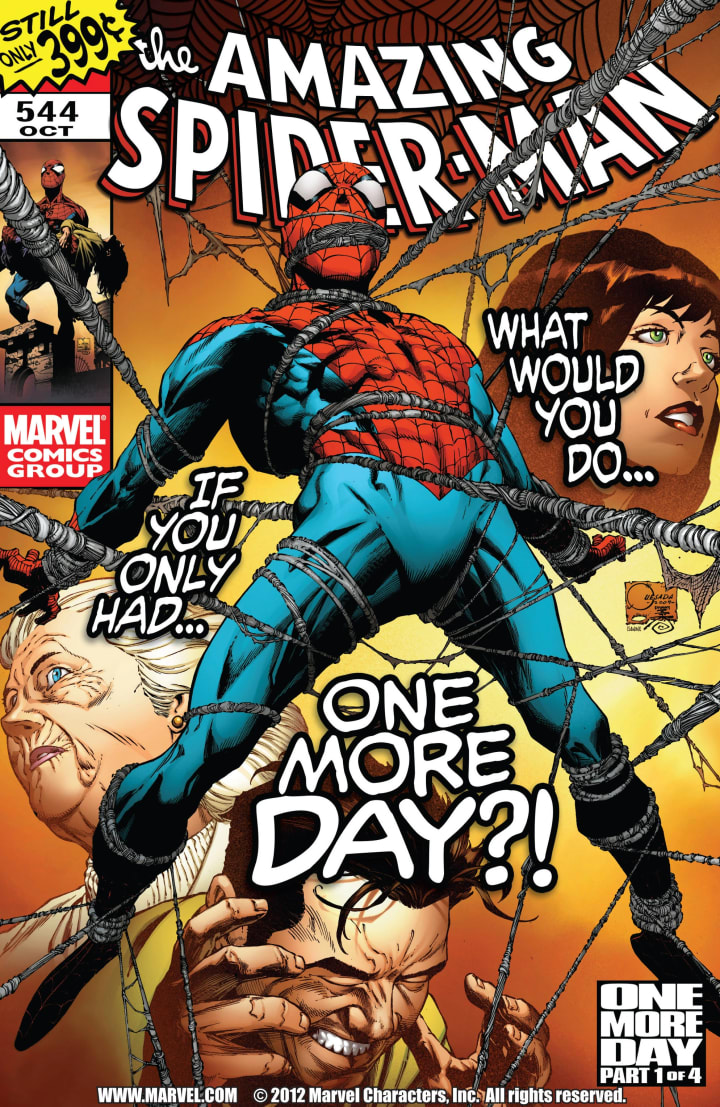
Immediately following the "Back in Black" storline, Spider-Man is distraught over the impending death of his Aunt May. The archdemon Mephisto offers to save her life, but the price is Peter's marriage to Mary Jane. Peter and Mary Jane agree, and have one final day together before all history of their marriage is erased so that Aunt May can live. This alteration of the timeline is reflected in the Spider-Man film "No Way Home," and the effects continue in the Spider-Man titles to this day.
About the Creator
Gene Lass
Gene Lass is a professional writer, writing and editing numerous books of non-fiction, poetry, and fiction. Several have been Top 100 Amazon Best Sellers. His short story, “Fence Sitter” was nominated for Best of the Net 2020.
Reader insights
Outstanding
Excellent work. Looking forward to reading more!
Top insights
Easy to read and follow
Well-structured & engaging content
Excellent storytelling
Original narrative & well developed characters
Expert insights and opinions
Arguments were carefully researched and presented
Eye opening
Niche topic & fresh perspectives
Heartfelt and relatable
The story invoked strong personal emotions
On-point and relevant
Writing reflected the title & theme


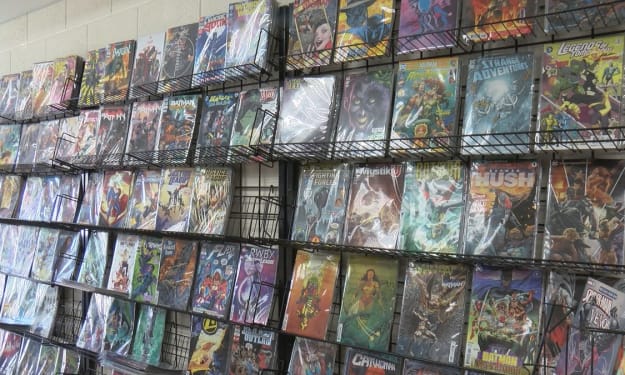



Comments (1)
This was such a fun and interesting read!